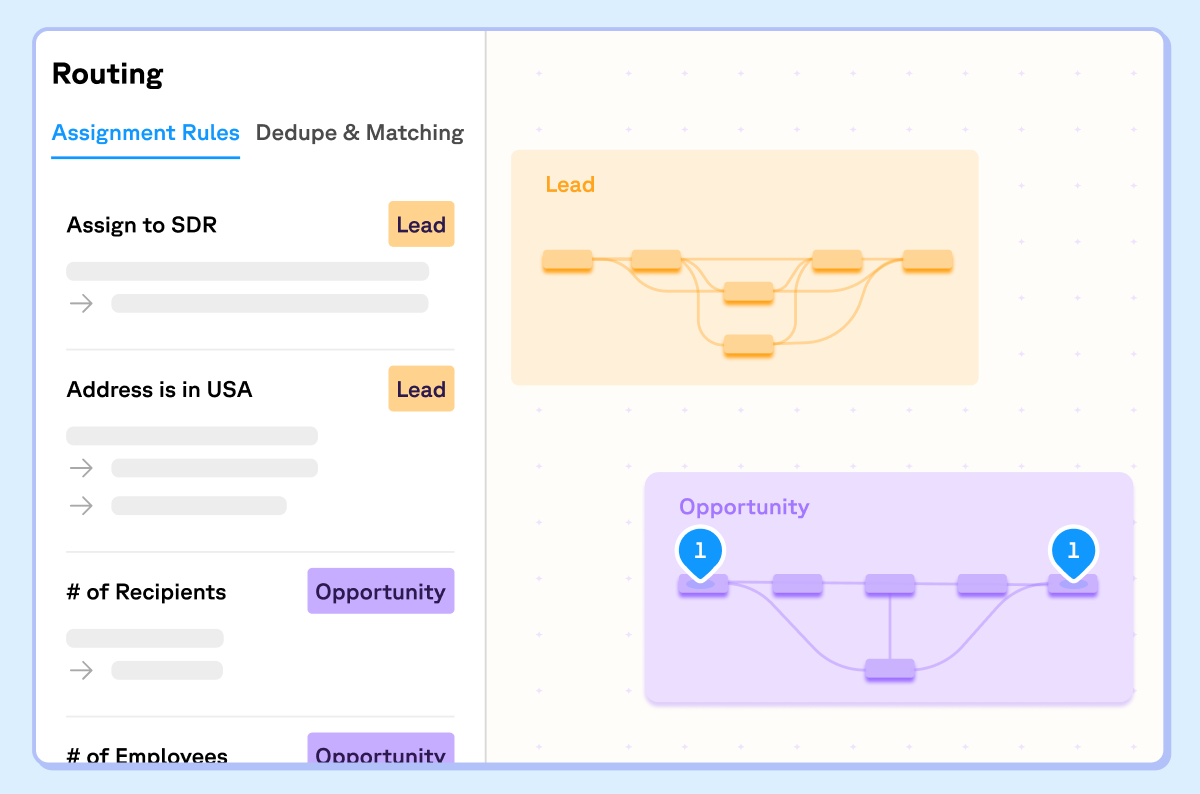
Salesforce is a powerful tool for business automation. But, implementing Salesforce is not a simple task. It requires careful planning and execution.
This article will guide you through the best practices for a successful Salesforce implementation so you can avoid common pitfalls and maximize the benefits of the platform. We'll cover everything from defining clear business objectives to measuring success post-implementation. Let's get started.
Understanding Salesforce implementation
Successful Salesforce implementation is more than just installing software. It involves a strategic approach that aligns with your business goals.
A clear understanding of this process is crucial for success. You need to understand the steps involved and why each one is important.
Key phases include planning, data migration, customization, and user training. Each phase plays a vital role in achieving your desired outcomes.
Here are some essential elements of Salesforce implementation:
- Analysis: Identify what your business requires from Salesforce.
- Executive Buy-In: Secure support from leadership for the implementation.
- Customization: Tailor Salesforce to fit your business processes.
- Training: Prepare your team to use the new system effectively.
These steps, when executed properly, can lead to significant improvements in your business operations.

The importance of Salesforce for business automation
Salesforce revolutionizes business automation. It integrates processes, enhancing efficiency and productivity.
Its automation features save time by reducing manual tasks. This allows your team to focus on strategic activities, driving growth.
The real-time data and analytics provide insights, guiding decision-making. Salesforce thereby streamlines operations and improves customer engagement.
Preparing for Salesforce implementation
Preparation lays the foundation for a successful Salesforce implementation. It involves careful planning and strategic decisions.
First, align the implementation with business goals to ensure relevance and impact. Identify what you want to achieve with Salesforce.
Second, involve key stakeholders early in the process. Their input and support are crucial for smooth execution.
Make sure you have a robust plan that addresses all critical aspects. Consider the following key preparation steps:
- Define objectives: Know what you're aiming for with Salesforce.
- Secure executive support: Leadership buy-in is essential.
- Select appropriate edition: Match Salesforce features with your needs.
- Conduct needs analysis: Understand your business requirements in detail.
These steps help you develop a clear roadmap. With the right preparation, Salesforce can transform your operations and drive efficiency.
Defining clear business objectives
Setting clear objectives is crucial for successful Salesforce implementation. Start by identifying key business challenges that Salesforce can address.
Objectives should be specific, measurable, and aligned with your strategic goals. This clarity ensures that your Salesforce implementation delivers tangible benefits.
Aligning these objectives with user requirements promotes adoption and maximizes impact. Clear objectives guide decision-making throughout the implementation process, ensuring focus and alignment.
Conducting a thorough needs analysis
A thorough needs analysis sets the stage for effective Salesforce customization. It involves mapping current processes and identifying gaps.
Engage stakeholders to gather insights and understand their needs. This ensures that Salesforce addresses actual pain points and requirements.
A detailed analysis informs customization decisions, promoting a solution that truly fits. It also aids in setting realistic goals and expectations for what Salesforce can achieve.
The Salesforce implementation roadmap
Crafting a Salesforce implementation roadmap provides clarity and direction. It breaks down the project into manageable phases.
A well-defined roadmap includes all critical aspects of the project. It sets clear timelines, identifies resources, and allocates responsibilities.
With a roadmap, you can monitor progress and keep the project on track while streamlining communication among stakeholders.
Key components of an effective Salesforce roadmap include:
- Timelines: Define milestones and deadlines.
- Responsibilities: Assign tasks to team members.
- Resources: Identify tools and budget requirements.
- Risks and mitigation: Anticipate challenges and plan responses.
This roadmap acts as a blueprint guiding the Salesforce journey. Regular reviews and updates ensure it remains relevant to changing needs and conditions.
Developing a detailed implementation plan
Developing a comprehensive implementation plan is crucial for success. This plan outlines the steps necessary to achieve your Salesforce objectives.
Start by identifying specific tasks required to configure and deploy Salesforce. Assign roles and responsibilities to ensure accountability.
The plan should include a detailed timeline with key milestones and deliverables. Regular updates keep stakeholders informed and help manage expectations.
Prioritizing data quality and governance
Data quality is essential for effective Salesforce adoption. Start by cleansing existing data to remove inaccuracies and duplicates.
Implement robust data governance policies to maintain data integrity over time. These policies define how data is entered, stored, and accessed.
Data quality directly affects the insights Salesforce can deliver. Set up validation rules and audits to ensure ongoing adherence to data standards.
Customization and alignment with business processes
Salesforce should enhance, not disrupt, existing workflows. Customize it to fit your business processes seamlessly.
Engage end-users to understand their workflows and pain points. This understanding informs meaningful customizations that improve user satisfaction.
Avoid unnecessary complexity that hampers usability and future updates. Focus on value-driven customizations that support core business functions.
Engaging certified Salesforce partners
Partnering with certified Salesforce experts provides valuable insights and expertise. These partners assist in tailoring Salesforce to your specific needs.
They bring experience from numerous implementations, helping avoid common pitfalls. They can offer best practices and innovative solutions you might not have considered.
Involving a Salesforce partner ensures a smoother, more efficient implementation. Their guidance helps tailor Salesforce to align perfectly with your strategic objectives.
You can also use Sweep, an AI-powered visual workspace, to implement Salesforce for your business. Sweep's no-code interface gives you the power to create business processes, business logic, custom fields, and automations during the Salesforce implementation process and beyond.

Maximizing user adoption and training
User adoption is critical to a successful Salesforce implementation. Engaging users early in the process fosters enthusiasm and acceptance.
Training is a fundamental component of adoption. Tailored programs ensure users understand how to leverage Salesforce effectively. Training should be hands-on and interactive to reinforce learning.
Continuous support and resources are essential after the initial training phase. Encourage users to explore Salesforce's vast capabilities. Offering a mix of self-paced courses, workshops, and one-on-one sessions can address diverse learning needs.
To maximize adoption and training outcomes, consider these strategies:
- Engage users early: Include them in planning and testing phases.
- Tailor training: Customize based on roles and responsibilities.
- Provide ongoing support: Offer resources and help desks for user queries.
- Foster a collaborative environment: Encourage feedback and knowledge sharing.
Implementing these strategies creates a supportive atmosphere. This leads to increased confidence and proficiency with Salesforce. Users will more readily embrace the change when they feel supported and heard.
Involving end users in the process
Involving end-users from the start ensures their needs and concerns are addressed. Their feedback is invaluable in shaping a system they will use daily.
Bringing users into focus groups or workshops highlights real-world challenges and opportunities. This inclusion not only improves user satisfaction but also boosts engagement and ownership. When users see their input reflected in the system, they become active champions of the change.
Post-implementation: Measuring success and ongoing support
Once Salesforce is live, it's crucial to assess its effectiveness. Regular evaluations ensure the system meets business objectives. Measuring performance helps identify areas needing improvement.
Tracking key performance indicators (KPIs) provides insights into system usage and benefits. Regularly monitor how Salesforce supports your goals and make changes if needed.
User satisfaction is another vital measure. Understanding user experiences can highlight potential issues. Conduct surveys or interviews to gather honest feedback.
A strong support structure is essential for post-implementation success. This includes maintaining a dedicated team to handle queries and troubleshoot issues promptly. Continuous training sessions keep users updated with new features and best practices.
To ensure ongoing success, consider these post-implementation steps:
- Evaluate KPIs: Regularly review performance metrics.
- Gather user feedback: Use surveys and direct interactions.
- Maintain a support team: Offer prompt assistance and solutions.
- Provide ongoing training: Keep users informed and proficient.
Implementing these measures creates a sustainable Salesforce environment. It fosters continuous growth and adaptability in your organization.
Monitoring performance and user satisfaction
Evaluating Salesforce performance helps align it with business needs. Use dashboards and reports to monitor metrics regularly. This practice identifies trends and potential issues swiftly.
User satisfaction is equally important. Happy users are productive and more engaged. Conduct periodic surveys to gauge their experiences and concerns. Address feedback promptly to maintain trust and satisfaction.
Establishing a feedback mechanism for continuous improvement
A robust feedback mechanism encourages user interaction and system enhancement. Create channels for users to share their experiences and suggest improvements. This proactive approach keeps the system evolving according to user needs.
Regularly review the feedback to implement meaningful changes. By fostering a culture of continuous improvement, Salesforce can remain a valuable asset. Emphasize open communication to create a receptive atmosphere for ongoing development.
Common pitfalls and how to avoid them
Implementing Salesforce successfully requires awareness of potential pitfalls. Without proper precautions, these issues can derail your project. Understanding common challenges helps in devising strategies to avoid them.
One major pitfall is over-customizing the system. Excessive changes can lead to complexity and maintenance difficulties. It's important to balance customization with simplicity.
Resistance to change is another common challenge. Employees may hesitate to adopt new systems if they lack a clear understanding of benefits. It's crucial to communicate the vision and foster a supportive environment.
Here are some tips to dodge these pitfalls:
- Avoid over-customization: Keep it simple and efficient. While tailoring the platform to fit your needs is tempting, too many changes can lead to inefficiencies. Instead, aim for essential tweaks that align with your core processes.
- Communicate learly: Share the vision with all stakeholders. Consider using Sweep's visual workspace to ensure alignment across cross-functional teams before completing the implementation process.
- Foster User Adoption: Engage users early and offer robust training. Each end user needs to fully invest in the platform for the CRM to function properly.
Conclusion: Embracing the Salesforce journey
Embarking on a Salesforce implementation journey offers endless potential for your business. With strategic planning and commitment, you can leverage Salesforce to enhance operations and drive growth.
The key to success lies in following best practices, engaging stakeholders, and fostering a culture of learning. By doing so, you ensure that Salesforce evolves alongside your business needs and empowers you to achieve your objectives. As you embrace this journey, Salesforce becomes a vital partner in your business automation and cloud solutions strategy.
And if you're looking for a simple solution to Salesforce implementation, book a demo with the Sweep team to see how it works.












